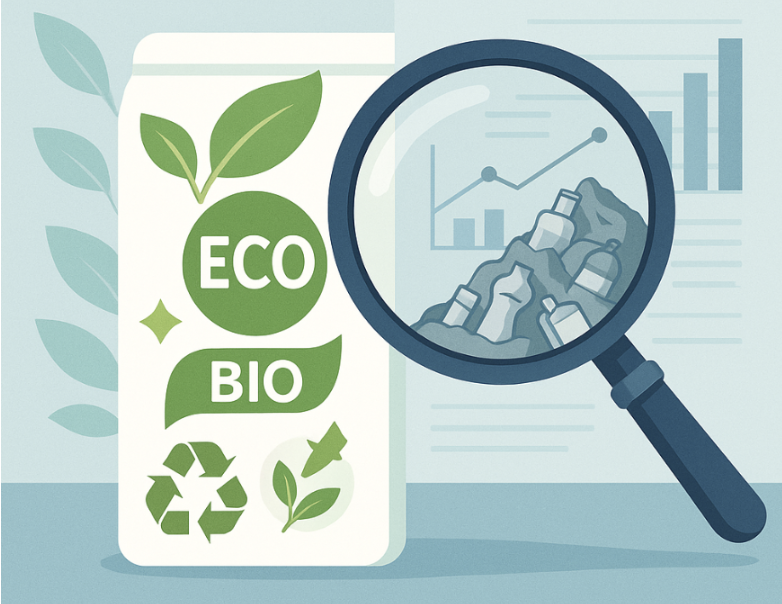Greenwashing 101: How to Spot It (and How Not to Do It)
Sustainability is everywhere these days—on packaging, in mission statements, and across corporate websites. But as the language of sustainability becomes more common, so do empty claims. This is where greenwashing comes in.
Greenwashing happens when organizations overstate or misrepresent their environmental efforts to appear more sustainable than they actually are. Whether intentional or not, it undermines trust, invites scrutiny, and increasingly carries real regulatory consequences.
What Greenwashing Looks Like
The signs aren’t always obvious. Some companies lean on vague buzzwords, “eco-friendly,” “sustainable,” “clean,” without offering specifics. Others tout initiatives that have minimal real-world impact while larger environmental issues go unaddressed.
Here are a few well-documented examples:
Volkswagen advertised “clean diesel” vehicles that were later found to have defeat devices, allowing them to pass emissions tests while producing up to 40 times the legal pollution limit.
Charmin, a Procter & Gamble brand, labeled its toilet paper as responsibly sourced—despite relying on virgin pulp from Canada’s boreal forest, a critical carbon sink.
In August 2025, Shein was fined €1 million by Italian regulators for misleading claims about recycled content and emissions reductions in its “evoluSHEIN” line.
Even well-meaning campaigns can miss the mark if they aren’t backed by meaningful action. Consumers are paying attention, and so are regulators.
Why It Matters
Greenwashing isn’t just a PR misstep. It can damage stakeholder trust, expose companies to legal and financial risks, and dilute the impact of legitimate sustainability efforts.
Recent consumer research shows a growing skepticism around environmental claims. According to a 2022 TIME analysis, the majority of shoppers don’t trust companies to follow through on sustainability commitments without oversight or proof.
At the same time, regulators across the EU, US, and Australia are stepping up enforcement. False or exaggerated claims can now result in fines, litigation, or restrictions on advertising.
How to Avoid It
The solution isn’t to stay silent about sustainability—it’s to be intentional and transparent. Greenwashing can be avoided by grounding claims in credible strategy and action.
Start with a materiality assessment to identify which ESG (Environmental, Social and Governance) issues are most relevant to your business and stakeholders. This helps ensure you're focusing on what actually matters—not just what’s trending. Materiality assessments are considered a foundational step in developing ESG strategies and are recommended by leading sustainability frameworks like GRI and SASB (IRIS Carbon, 2023).
Next, set science-based targets that are aligned with global climate goals, such as the Paris Agreement. These targets should be specific, measurable, and time-bound, not vague aspirations for 2050. The Science Based Targets initiative (SBTi) offers companies a credible path to align emissions reductions with climate science (SBTi).
Third-party verification is also critical. Independent certifications such as B Corp, Forest Stewardship Council (FSC), or Global Reporting Initiative (GRI) standards help validate claims and establish external credibility. According to AACSB, third-party validation significantly improves stakeholder trust and reporting quality (AACSB, 2023).
Be sure to back up your statements with data. Use transparent, quantifiable metrics, avoid jargon, and make reporting easily accessible. Best practice recommends publishing regular impact reports and data dashboards as a way to maintain consumer and investor trust (CleanHub, 2023).
Finally, integrate sustainability into your governance structures. Embedding ESG into leadership, board-level oversight, and operational risk management moves sustainability beyond marketing—it becomes part of your core business strategy. This is increasingly expected by regulators and financial institutions alike (IRIS Carbon, 2023).
How Wilmot Supports Authentic Sustainability
At Wilmot, we work with clients to develop sustainability strategies that are rooted in accountability and aligned with long-term impact. Our approach focuses on:
Conducting materiality assessments to prioritize the most relevant ESG issues.
Supporting the development of science-based goals backed by measurable data.
Ensuring third-party verification where possible to add credibility.
Integrating sustainability into broader governance and strategy frameworks.
Our goal is to help organizations communicate their progress with clarity, without overstating what’s been achieved. Greenwashing doesn’t just erode public trust; it undermines the broader effort to address climate and social challenges. Doing sustainability well requires rigor, transparency, and follow-through. When done right, it builds credibility, resilience, and long-term value.


